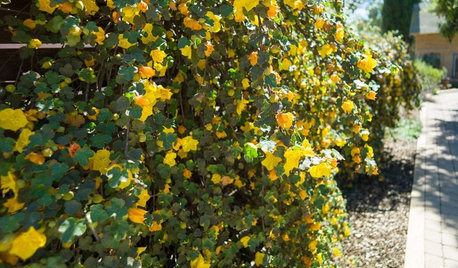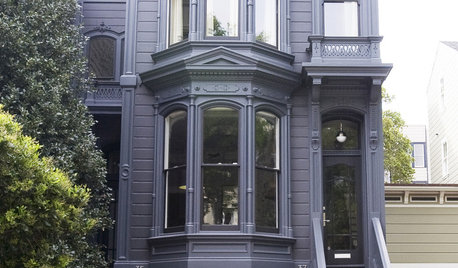Root pruning containers - 15 gallon size
rainygarden
13 years ago
Related Stories

GARDENING GUIDESTidy Up Sprawling Native Shrubs With These Pruning Tips
Sound horticultural pruning methods work for native and nonnative plants alike
Full Story
GARDENING GUIDES7 Fall Beauties for Mild-Climate Container Gardens
We're talking long-term relationship: These showy shrubs will bring color to your container garden autumn after autumn
Full Story
PLANTING IDEASStretch the Budget, Seasons and Style: Add Conifers to Your Containers
Small, low-maintenance conifers are a boon for mixed containers — and you can transplant them to your garden when they’ve outgrown the pot
Full Story
FALL GARDENING5 Fall Fruits You Can Grow in Containers
Brighten your porch or patio with a potted pomegranate, kumquat, blueberry bush or another great fall fruit
Full Story
FARM YOUR YARDHow to Grow Vegetables in Containers
Get glorious vegetables and fruits on your patio with a pro’s guidance — including his personal recipe for potting mix
Full Story
FARM YOUR YARD10 Easy Edibles to Grow in Containers
These herbs, vegetables and fruits are just as happy in a pot as they are in the ground
Full Story
GARDENING GUIDES15 Ideas to Try in Your Garden This Year
These gardening stories were tops among Houzz readers. Which ideas might you try this year?
Full Story
LANDSCAPE DESIGN15 Great Ideas for a Lawn-Free Yard
End the turf war for good with hardscaping, native grasses and ground covers that save water and are easier to maintain
Full Story
GARDENING GUIDESHow to Install a Drip Irrigation System
Save time and water with a drip watering system in your vegetable garden — a little patience now will pay off later
Full Story
CURB APPEALHow to Update a Traditional Exterior With Color
Keep those historic architectural details — a few gallons of paint may be all you need to give a traditional facade a stylish new twist
Full Story






cebury
rainygardenOriginal Author
Related Professionals
Bridgetown Landscape Architects & Landscape Designers · Taylorsville Landscape Architects & Landscape Designers · Wareham Landscape Architects & Landscape Designers · Garland Landscape Contractors · Hoover Landscape Contractors · Placerville Landscape Contractors · Salmon Creek Landscape Contractors · Smyrna Landscape Contractors · Greenwich Solar Energy Systems · Inver Grove Heights Solar Energy Systems · North Hollywood Window Contractors · Trinity Window Contractors · Cockeysville Fence Contractors · La Canada Flintridge Fence Contractors · Selden Fence Contractorscebury
granburyflowergirl
cebury
rainygardenOriginal Author
granburyflowergirl
rainygardenOriginal Author
Suzi AKA DesertDance So CA Zone 9b